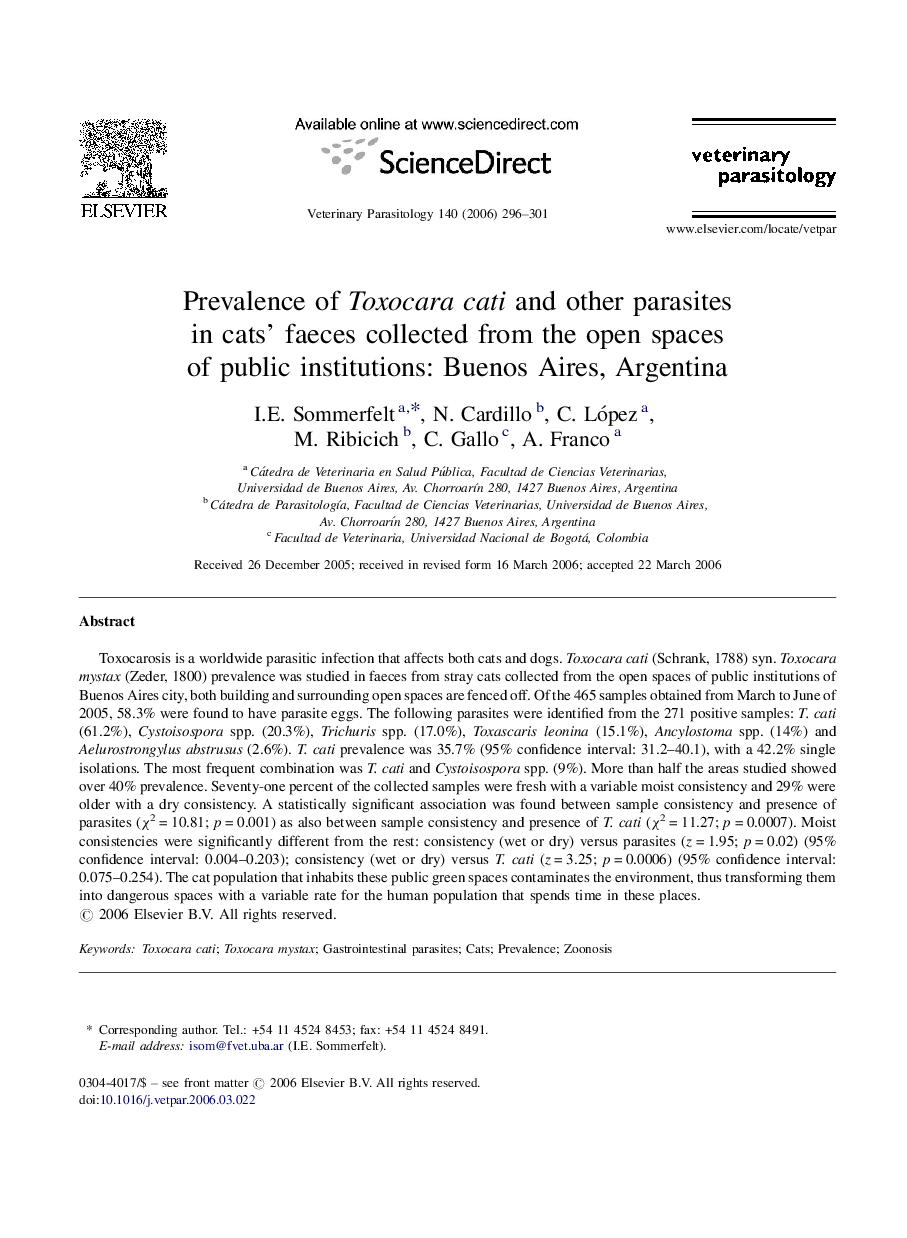| کد مقاله | کد نشریه | سال انتشار | مقاله انگلیسی | نسخه تمام متن |
|---|---|---|---|---|
| 2472406 | 1555792 | 2006 | 6 صفحه PDF | دانلود رایگان |

Toxocarosis is a worldwide parasitic infection that affects both cats and dogs. Toxocara cati (Schrank, 1788) syn. Toxocara mystax (Zeder, 1800) prevalence was studied in faeces from stray cats collected from the open spaces of public institutions of Buenos Aires city, both building and surrounding open spaces are fenced off. Of the 465 samples obtained from March to June of 2005, 58.3% were found to have parasite eggs. The following parasites were identified from the 271 positive samples: T. cati (61.2%), Cystoisospora spp. (20.3%), Trichuris spp. (17.0%), Toxascaris leonina (15.1%), Ancylostoma spp. (14%) and Aelurostrongylus abstrusus (2.6%). T. cati prevalence was 35.7% (95% confidence interval: 31.2–40.1), with a 42.2% single isolations. The most frequent combination was T. cati and Cystoisospora spp. (9%). More than half the areas studied showed over 40% prevalence. Seventy-one percent of the collected samples were fresh with a variable moist consistency and 29% were older with a dry consistency. A statistically significant association was found between sample consistency and presence of parasites (χ2 = 10.81; p = 0.001) as also between sample consistency and presence of T. cati (χ2 = 11.27; p = 0.0007). Moist consistencies were significantly different from the rest: consistency (wet or dry) versus parasites (z = 1.95; p = 0.02) (95% confidence interval: 0.004–0.203); consistency (wet or dry) versus T. cati (z = 3.25; p = 0.0006) (95% confidence interval: 0.075–0.254). The cat population that inhabits these public green spaces contaminates the environment, thus transforming them into dangerous spaces with a variable rate for the human population that spends time in these places.
Journal: Veterinary Parasitology - Volume 140, Issues 3–4, 10 September 2006, Pages 296–301